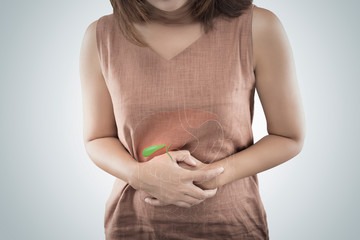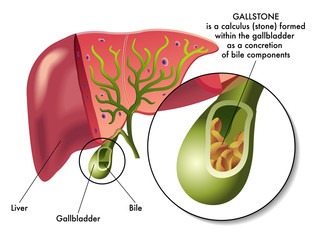Navigating Gallstone Treatment: From Diagnosis to Recovery
GALLSTONES


Gallstones: Understanding the Silent Stones
The gallbladder, a small organ tucked beneath the liver, plays a crucial role in digestion by storing bile—a digestive fluid produced by the liver. This bile helps break down fats in the food we eat. However, when bile components crystallize in the gallbladder, they form gallstones, which can range from the size of a grain of sand to as large as a golf ball.
Silent Stones and Symptoms
Many people with gallstones, also known as “silent stones,” do not experience any symptoms and may never know they have them. But when a gallstone lodges in a duct and causes a blockage, the resulting pain can be intense. Common symptoms include:
Sudden and rapidly intensifying pain in the upper right portion of your abdomen
Back pain between your shoulder blades
Nausea or vomiting
Jaundice and Dark Urine
When to Seek Treatment
If you’re diagnosed with gallstones but don’t experience symptoms, treatment may not be immediately necessary. However, if symptoms occur, they’re unlikely to stop until the gallbladder is removed. If your doctor recommends surgery, it’s wise to follow their advice promptly to avoid complications.
Modern Treatment for Gallstones
The good news is that gallstone treatment has significantly advanced. The most common procedure, laparoscopic cholecystectomy, is minimally invasive and typically takes about 30 minutes. Patients often go home the same day with minimal discomfort.
Complications of Untreated Gallstones
Ignoring gallstones can lead to complications such as:
Cholecystitis: Inflammation of the gallbladder, which can cause severe pain and fever.
Pancreatitis: Gallstones can block the bile duct leading to the pancreas, causing inflammation.
Gallbladder Cancer: Though rare, untreated gallstones can increase the risk of gallbladder cancer.
Treatment Options
The primary treatment for symptomatic gallstones is surgery to remove the gallbladder. Other treatments include:
Medications: Oral medications can dissolve gallstones, but this may take years and isn’t effective for everyone.
Lithotripsy: High-energy sound waves break up gallstones, but this method is less common due to its risks.
Surgical Removal: The most prevalent and effective treatment globally is gallbladder removal surgery, known for its quick relief from gallstone-related discomfort.
Life After Gallbladder Removal
Having your gallbladder removed typically has minimal impact on your daily life. Post-surgery, bile flows straight from the liver to the small intestine, which may initially lead to some digestive adjustments such as indigestion or loose stools.
To manage these changes, it’s often recommended to modify your diet post-surgery by reducing the intake of greasy, rich, and spicy foods.
Preventive measures against gallbladder stones include adhering to a balanced diet from the start. It’s worth giving a second thought before indulging in overly sweet or fatty treats.
In India, gallbladder removal is a common procedure, with many experienced doctors performing these surgeries swiftly and efficiently. From the initial diagnosis through to post-operative care, patients are supported throughout their recovery to ensure a quick return to wellness.
Conclusion
Gallstones are a common condition that can cause significant discomfort. While they may not always present symptoms, it’s important to address them if they do. With modern surgical techniques, treatment is quick, effective, and offers a swift return to daily life. If you suspect you have gallstones, consult with a healthcare professional to explore your treatment options.


